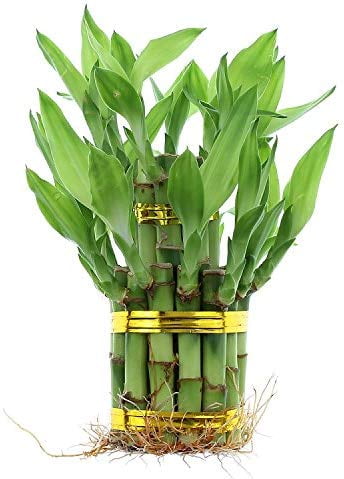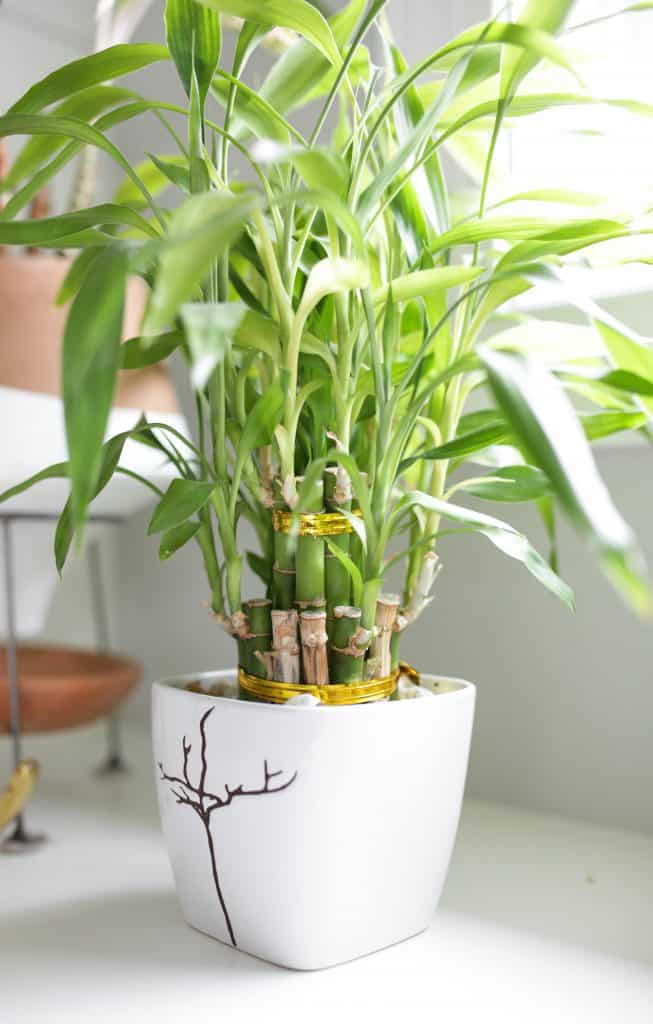Table Of Content

As a result, the growth, harvesting, trade, and utilization of Bambusoideae is a billion-dollar global industry. It provides job opportunities, positively impacts economies, and is a very affordable plant to grow and put to various uses. Growing it in a very strong masonry pot or container can be a good option if you just have to have some of the running type that can aggressively spread. Common bamboo is a vigorous species that isn’t overly bothered by pests and serious diseases when planted. Some pests, such as small bamboo borer (Dinoderus minutus), can be a problem, but these affect harvested plants rather than those in the ground.
Bamboo House Plant Care: Watering Tips
When growing a certain variety of bamboo, it’s important to conduct some species-specific research. Orient the cuttings so the leafing branches are all facing the center of the container. It’s alright if the branches aren’t entirely covered with potting mix. Juvenile culms grow skinny green leaves directly from culm rings, while more mature culms will usually sprout foliage from thin lateral branches. Foliage typically grows from the top half of the culms, leaving the lower woody growth exposed in an attractive, almost tree-like manner. Welcome to the enchanting world of Lucky plants, where simplicity meets elegance, and prosperity is just a leaf away.
Woman about to buy first house withdraws offer when she spots 'red flag' plant in the garden - The Mirror
Woman about to buy first house withdraws offer when she spots 'red flag' plant in the garden.
Posted: Sat, 23 Mar 2024 07:00:00 GMT [source]
When to Bring Golden Bamboo Back Inside
Large-leaved Bamboo is one of the different types of bamboo house plants. 'The bamboo plants most regularly recommended for gardens are types of phyllostachys, like my favorite P. bambusoides "Castillonii",' says Anne. 'These are usually tall, majestic types with canes of olive green, black, or gold and green. They do produce rhizomes, but their spread is gradual and you can keep a close check on them and cut the creeping stems while young. Growth is more restrained in drier soils, and plants can be set inside vertical barriers or within root-barrier fabric.
Types of Fertilizers Suitable for Bamboo Plants
After years of planting and maintaining bamboo, I am aware of both its pitfalls and positives, and ultimately the positives win out. These bamboos have medium-sized, elongated leaves that are both wide and entirely striped, as well as white nodes and canes. Hedges (Phyllostachys glauca) are stunning evergreens that are distinguished by their exquisite canes, the majority of which grow from vivid bluish-green culms.
Bamboo Plant Indoor Care: 17 Easy Care Tips For Beginners
Water in small amounts, two to three times per week at first, allowing the top 2-3 inches to dry out between waterings. Water is first on the list because it is the single-most-important factor in keeping a bamboo healthy. Bamboo is a moisture-loving plant, but an over-watered bamboo will not survive. If the soil is constantly oversaturated with water, the roots will suffocate and can rot. Smaller varieties of bamboo make excellent container plants for a sunny and sheltered patio or courtyard.
10 Tips To Grow Lucky Bamboo Plant - News18
10 Tips To Grow Lucky Bamboo Plant.
Posted: Sat, 30 Sep 2023 10:24:09 GMT [source]
Caring for an indoor bamboo plant can sometimes leave people scratching their heads, especially if they are new to houseplants. One of the most notable features of the Black Bamboo is its incredible hardiness. It can withstand extremely low temperatures, surviving in temperatures as low as 0 degrees Fahrenheit.
Is lucky bamboo grown in water?
Their size and appearance depend on the specific species you choose. Some great resources like ASPCA catalog the safety or toxicity of many common household plants. Contact your local poison control center, if you are ever in doubt. It’s a way for you to control the look, size, and shape of your plant, and maintain the dimensions and aesthetic you like. It can benefit the health of the bamboo by directing the plant’s energy toward a limited number of culms and branches. This terminology is important because it will tell you which places are safe to cut when pruning.

If the stalks themselves begin to rot or turn mushy and black, they are likely beyond saving. Causes of roots turning mushy may include poor water quality, fungus, or bacteria that was on the plant when it was received. Decaying stalks threaten any other stalks they are close to, so it's best to remove them at once. If you have surviving stalks, clean the container and replace the soil or stones. If you notice algae growing in the water, it's usually because the plant is potted in a clear vase, allowing light to penetrate, and encouraging algae growth. Just clean out the vase so it's squeaky clean (use mild liquid dish detergent and water) and start again.
This plant tolerates various soil types but prefers organically rich soil with good drainage. A commercial potting mix or a mixture of peat moss and perlite should be fine for container plants. Outdoors, bamboo prefers a spot that gets full sun to partial shade. Indoors, keep your bamboo by your brightest window to get natural sunlight, and rotate the pot weekly to ensure all sides of the plant get light. It's best planted in the spring or early fall, though indoors, you generally can plant it any time of year. Indoors, it won't grow as large, usually about 5 to 8 feet tall.
Although direct sunshine could affect the texture of the leaves, they appreciate some shade. The umbrella Bamboo is one of the different types of bamboo house plants. We are a unique bamboo-exclusive specialty nursery tucked among the forested hills near Sebastopol, California.
Those stating that bamboo should be removed because of fire risks are perhaps missing the fact that bamboo contains few volatile oils and the canes are high is silica content. If bamboo is green and living, and dead stalks, stems, and leaves are removed, then it does not pose a serious fire risk. In fact, groves of large timber bamboo have been used as fire breaks. Giant Thorny Bamboo is one of the different types of bamboo for house plants. It is a resilient plant that can endure challenging conditions for an extended period of time, making it a simple bamboo plant to cultivate in your indoor garden. Natural black bamboo can reach heights of up to 80 feet and has lance-shaped leaves ranging from 2 to 5 inches.
Overwatering or underwatering can lead to a host of problems, including root rot, yellowing leaves, and even plant death. There are many different types of containers available, and each has its own unique advantages and disadvantages. Choosing the right container for your bamboo plant is an important part of keeping it healthy and thriving. We will also cover topics like drainage, pot size, and choosing the right soil mix. Here’s a section on the different types of containers available, and the pros and cons of each.
You may be wondering what makes this one so special compared to other types of bamboo plants. As its name implies, Golden Bamboo has a yellow-golden hue to it that stands out in any indoor environment. It is relatively easy to care for and maintain compared to other varieties, with only minimal watering requirements and light levels needed for the plant to thrive. Lucky bamboo’s official name is Dracaena sanderiana, and it is marketed as a lucky plant. This species of bamboo does not originate in Asia but actually hails from central Africa instead. If you are looking at growing bamboo indoors, you should start with lucky bamboo, especially if it is your first foray into growing bamboo.

No comments:
Post a Comment